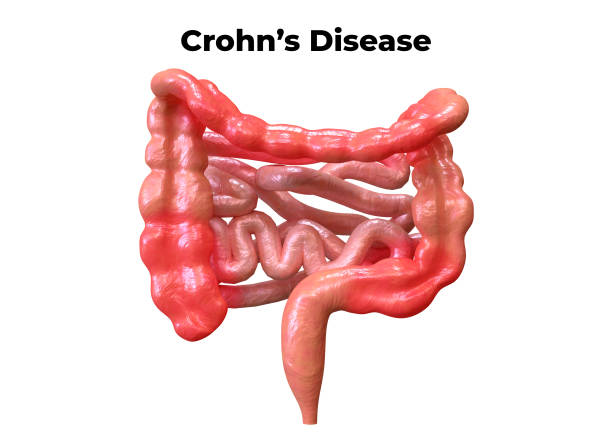Getting Rid of Marek’s Disease
What are the symptoms of Marek’s disease?
Symptoms of Marek’s disease vary depending on where the disease has attacked the body. They can range from swelling of internal organs to enlarged nerves. Some of the more common symptoms of the disease include depression, paralysis, loss of appetite, weight loss, anaemia, and diarrhoea. In some cases, the disease can lead to death. In the event that you suspect your pet has Marek’s disease, you should seek medical attention immediately.
Marek’s disease is an infection caused by a particularly strong herpes virus that affects chickens. It affects various organ systems, including the skin, nervous system, and eyes. In extreme cases, it can also cause tumor growth. The disease is most likely to affect young chickens, but it can occur in older chickens as well.
The most effective way to prevent Marek’s disease is vaccination of day-old baby chicks. This vaccine is most effective if given four or more days before the bird gets exposed to the virus. It is also recommended to separate the chicks from other birds until the vaccination has taken effect. Also, if you are caring for a flock of different ages, you should shower before interacting with each bird.
How do you get rid of Marek’s disease?
The first step in getting rid of Marek’s disease is to determine whether your birds are infected. If you have an infected bird, you should immediately take steps to remove them from the flock. The disease is highly contagious. Infected birds will shed virus-laden dander, which will spread to other birds. Moreover, the coop will remain contaminated even after infected birds have been removed. Also, the virus can spread through clothing and shoes of handlers.
To prevent this disease, keep your flock free of stress and overcrowding. Overcrowding, poor sanitation, housing conditions, and other causes of stress cause an increased risk of infection. To avoid the spread of the disease, implement biosecurity measures and vaccination.
The best way to prevent Marek’s disease is to purchase vaccinated chickens. Vaccinated chickens are resistant to the disease, which reduces the amount of virus shed in their dander.
How long can a chicken live with Marek’s disease?
Marek’s disease can affect chickens of any age, but it is most common in young ones. This disease is caused by a virus that hijacks the helper cells in the chicken’s body and transports it throughout the chicken’s body, setting up new sites for infection. The virus has six different mutations, some of which are benign while others can be highly pathogenic. Once a chicken is infected with this virus, it will carry it throughout its life.
The symptoms of Marek’s disease can be quite severe, affecting the chicken’s eyesight and health. A chicken with this disease will need special care to avoid dehydration and to keep itself warm. It will need frequent cleanings to remain healthy. Although there is no treatment for Marek’s disease, it can be prevented.
Marek’s disease can kill a chicken. Infected birds shed the disease-laden dander continuously. It can even affect the ovaries and oviduct, which can affect the birds’ hatchability and laying ability. Because the chickens shed virus-laden dander, infected chickens are more susceptible to other poultry diseases.
How contagious is Marek’s disease?
Marek’s disease is a virus transmitted to birds, which causes tumours in various organs. Symptoms include swelling, loss of appetite, weight loss, and dehydration. In severe cases, birds may be paralyzed, and they may die. Veterinary examinations are necessary to diagnose the disease and rule out other conditions. An enlarged nerve is one of the first signs of Marek’s disease, and internal organs may also show changes.
Although chickens are most commonly infected with Marek’s disease, the virus can infect other poultry as well. The virus is passed from one chicken to another by dust and dander. Chickens with this disease may not show symptoms right away, but you can look for symptoms, such as decreased egg production and growth. Infected chickens also may exhibit other symptoms like tumors or changes in feather follicles.
Marek’s disease is a viral infection that is highly contagious. The disease affects all breeds of poultry, but is more common in leghorn chickens and light egg-laying breeds. It can result in up to 50% mortality rate in poultry. Birds affected by Marek’s disease are infected for life. The majority of affected birds show no symptoms, but if infected, the disease can affect the entire flock.
Can a bird recover from Marek’s disease?
When a bird contracts Marek’s disease, it is paralyzed, unable to eat or drink. The disease’s symptoms usually appear in young birds, between six and 12 weeks of age. The disease affects the major nerves in the wings and legs, and can lead to paralysis. Its symptoms usually appear within a few days of infection.
Marek’s disease usually presents as progressive paralysis of the wings, neck, and limbs. In some cases, the disease can result in blindness and dehydration. Marek’s disease is also associated with tumor growth in key organs. This disease can appear very similar to other illnesses, which is why it is important to recognize the symptoms and seek treatment if necessary.
While there is no known cure for Marek’s disease, the virus can be destroyed with a good immune system. Marek’s virus enters host cells by sneaking into their RNA strands and then enters a state called latency. Latency allows the virus to survive and shed from the chicken. However, in immunosuppressed birds, it can “wake up” and cause the symptoms of Marek’s disease. Some birds may exhibit symptoms months or even years after the infection.
How do I know if my chicken has Marek’s?
Marek’s disease is an infectious disease that can affect chickens. Its symptoms are similar to other diseases, such as bird flu, and it can cause your chicken to lose weight or become ill. The disease usually has no cure, so you will have to monitor your chicken carefully until it shows signs of recovery. Some chickens may recover completely, but others will remain carriers of the disease for life.
Once the clinical signs of Marek’s disease appear, it is important to separate the affected bird from the rest of the flock and take it to the veterinarian for proper treatment. You should also provide extra protein to the affected chickens so that they can maintain a healthy weight. The feed should also be mixed with vitamin-enhanced water to make it more digestible.
The best way to tell if a chicken has the disease is by having him tested. Marek’s disease can be transmitted between birds, but it is not contagious to humans. However, vaccination can prevent the spread of the disease.
Can you save a chicken with Marek’s disease?
Marek’s disease is a herpes virus infection and is often fatal to chickens. It causes tumours to develop on their internal organs, such as the eyes, skin, and nerves. Fortunately, there is no known treatment for this disease, and it is not contagious to humans.
The symptoms of Marek’s disease can include grey eyes and pupils that are irregular. It can also affect the immune system, causing infections, diarrhoea, and other problems. The virus is transmitted by contact with poultry dust, which includes the droppings and skin of infected birds.
If you have a flock of chickens, you can try vaccinating them. However, this treatment may not be effective on older chickens. This disease can be a stressful ordeal for everyone. The best way to avoid this disease is to prevent it in your flock in the first place.
If you think you have a chicken with Marek’s disease, seek veterinary treatment. Your veterinarian can help you determine whether the disease is fatal or not. This can be done using the animal’s symptoms and post mortem findings. The most important step in the diagnosis is to determine the extent of the damage done to the chicken. The presence of lymphoid tumors can indicate Marek’s disease. The doctor may also notice changes in the internal organs.
What disinfectant kills Mareks?
Marek’s Disease is an outbreak of the bird virus that affects poultry. The virus isn’t harmful to humans, but it can cause havoc on poultry if left untreated. There are no effective cures for the infection, but there are some things you can do to prevent the spread of the disease.
Marek’s Disease is a potentially fatal disease that affects flocks. Infected birds develop cancerous tumors in internal organs and stop laying eggs. The virus is spread to poultry through dander from other birds or from dirty hen carriers. The disease is also transferred through darkling beetles that infest henhouses. The virus can survive for up to 65 weeks in coops and years in the soil.
One of the ways to test for infection is to run a PCR test. This procedure amplifies a piece of viral DNA billions of times. If the result is negative, then the virus is not present in the original sample.



